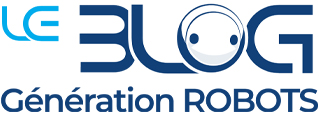-
 Visit our shop
Visit our shop
-
English

For several years, Génération Robots has been working with research laboratories and universities on their robotics projects. We provide development platforms, mobile robots and solutions based on ROS / ROS 2. Projects often evolve: after a testing phase, they move on to concrete applications that pose real technical challenges.
Here are 10 advanced questions that our customers regularly ask, with answers from our engineers.
Yes, provided you choose an open platform. Most professional mobile robots (AgileX, Husarion, Clearpath, etc.) are based on ROS or ROS 2, which allows for fairly extensive customisation.To go further, some platforms offer low-level access via CAN, UART, or REST/WebSocket APIs, allowing you to rebuild a completely custom software architecture.
ROS packages provide a good foundation, but for dynamic environments, it is essential to:
Precise temporal synchronisation between sensors is also essential.
Yes, but this remains a complex issue. Tools can be adapted for multi-robot use. To do this, you need to:
A distributed and well-isolated architecture is essential to ensure system stability.
The main limitations are:
They all allow for preliminary simulation (Gazebo, Webots) and good ROS 2 integration.
Here are some practical strategies:
Everything must be integrated into the robot’s state machine, with autonomous decision-making based on battery level and station availability.
The right tools:
Don’t forget to synchronise the clocks on each robot (NTP, GPS) to ensure data consistency.
It all depends on the level of realism and the need for visual or physical rendering.
Yes, provided that you:
ROS 1 does not natively integrate any security mechanisms. ROS 2, on the other hand, relies on DDS to offer to:
We also recommend:

Marine Senecat
Content Manager at Generation Robots
